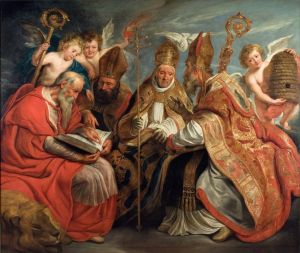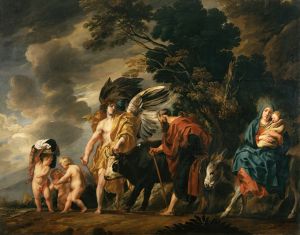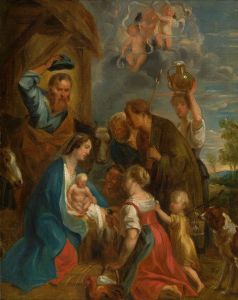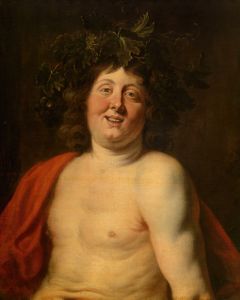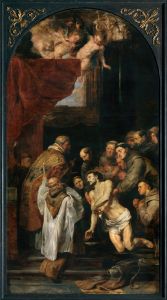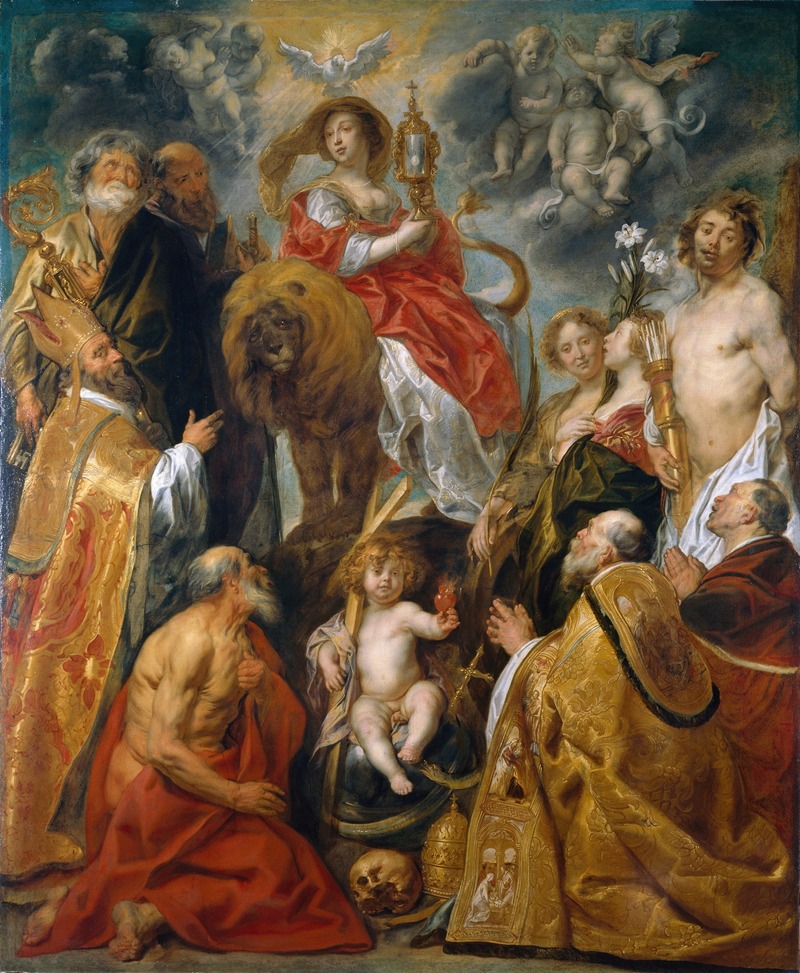
The Veneration of the Eucharist
A hand-painted replica of Jacob Jordaens’s masterpiece The Veneration of the Eucharist, meticulously crafted by professional artists to capture the true essence of the original. Each piece is created with museum-quality canvas and rare mineral pigments, carefully painted by experienced artists with delicate brushstrokes and rich, layered colors to perfectly recreate the texture of the original artwork. Unlike machine-printed reproductions, this hand-painted version brings the painting to life, infused with the artist’s emotions and skill in every stroke. Whether for personal collection or home decoration, it instantly elevates the artistic atmosphere of any space.
Jacob Jordaens (1593–1678) was a prominent Flemish Baroque painter known for his dynamic compositions, vibrant use of color, and depictions of religious and mythological themes. Among his works is The Veneration of the Eucharist, a painting that exemplifies his skill in portraying religious devotion and the theological significance of the Eucharist within the Catholic tradition.
This artwork, created during the 17th century, reflects the Counter-Reformation's emphasis on reaffirming Catholic doctrines, particularly the centrality of the Eucharist in Christian worship. The Counter-Reformation was a movement within the Catholic Church aimed at responding to the Protestant Reformation, and art played a significant role in conveying its messages. Jordaens, though not as closely associated with the Catholic Church as his contemporaries Peter Paul Rubens or Anthony van Dyck, contributed to this visual tradition with works like The Veneration of the Eucharist.
The painting depicts a group of figures gathered in an act of reverence toward the Eucharist, symbolized by the consecrated host. The composition is marked by Jordaens' characteristic use of dramatic lighting and expressive gestures, which draw the viewer's attention to the central theme of devotion. The figures in the painting likely represent a cross-section of society, emphasizing the universal nature of the Eucharist in Catholic belief. The inclusion of cherubs or angels, a common motif in Baroque religious art, further underscores the sacredness of the scene.
Jordaens' approach to religious themes often blended realism with a sense of grandeur, and The Veneration of the Eucharist is no exception. His ability to depict human emotion and interaction adds a layer of immediacy to the work, inviting viewers to engage with the spiritual message it conveys. The painting also demonstrates Jordaens' mastery of color and texture, with rich tones and detailed rendering of fabrics and facial expressions.
While Jordaens was raised in a Protestant household and later converted to Catholicism, his religious works, including The Veneration of the Eucharist, suggest a deep understanding of Catholic iconography and theology. This painting serves as a testament to his ability to navigate the religious and artistic currents of his time.
Today, The Veneration of the Eucharist is recognized as an important example of Jordaens' religious oeuvre. It reflects both his artistic talent and the broader cultural and religious context of 17th-century Flanders. The painting is housed in a museum or collection, where it continues to be studied and appreciated for its historical and artistic significance.





